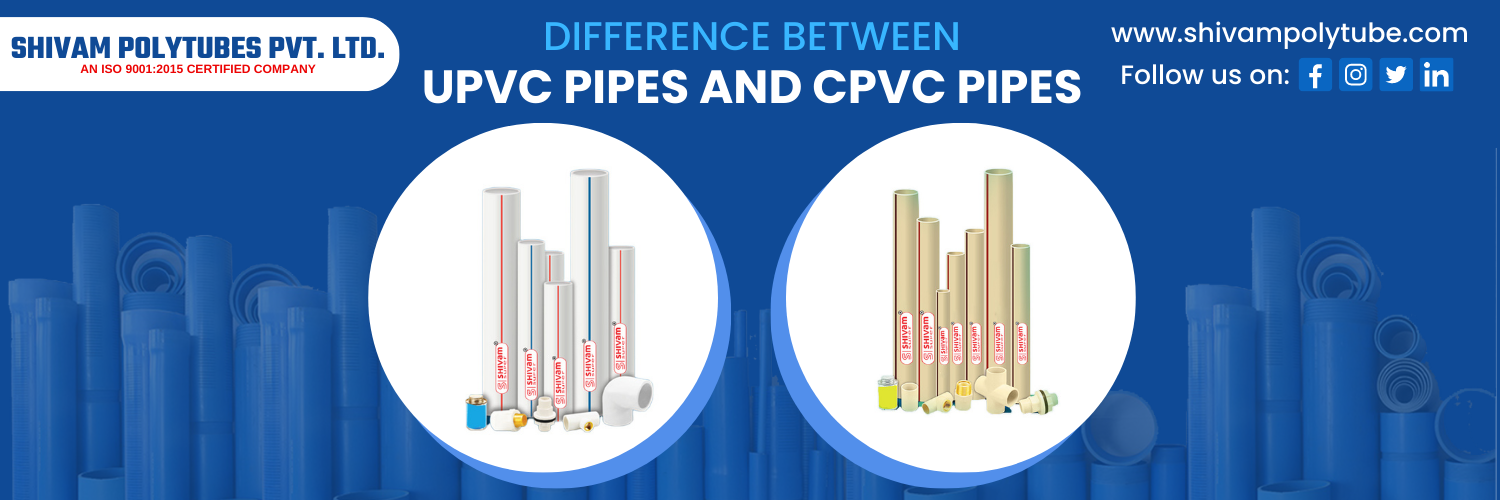CPVC and UPVC are two different types of plastic pipes commonly used for various plumbing and water supply applications. Here are the main differences between CPVC and uPVC pipes:
Certainly! Here's a point-wise comparison of UPVC (Unplasticized Polyvinyl Chloride) pipes and CPVC (Chlorinated Polyvinyl Chloride) pipes.
Material Composition:
- uPVC Pipes: Made from rigid PVC (Polyvinyl Chloride) resin without any plasticizers or additives.
- CPVC Pipes: Created by chlorinating PVC resin, which increases temperature resistance and durability.
Temperature Resistance:
- uPVC Pipes: Suitable for cold water applications and can handle temperatures up to about 140°F (60°C).
- CPVC Pipes: Can handle both hot and cold water systems and withstand temperatures of up to 200°F (93°C) or more.
Flexibility:
- uPVC Pipes: Rigid and less flexible, offering stability in various applications.
- CPVC Pipes: More flexible than uPVC pipes, making them easier to work with in certain situations.
Applications:
Chemical Resistance:
- uPVC Pipes: Offers good chemical resistance, making it suitable for a range of applications.
- CPVC Pipes: Has superior resistance to certain chemicals, making it ideal for specific industrial processes.
Cost:
- uPVC Pipes: Generally more cost-effective compared to CPVC pipes, offering an economic advantage.
- CPVC Pipes: Often costlier than uPVC pipes due to the additional manufacturing process and higher temperature resistance.
Jointing Methods:
- uPVC Pipes: Commonly joined using solvent cement, providing a strong and leak-resistant bond.
- CPVC Pipes: Also joined using solvent cement, ensuring secure connections for hot water applications.
Code and Standards:
- uPVC Pipes: Follow specific standards based on the application and region.
- CPVC Pipes: Also follow specific standards and codes for hot water and industrial applications.
Water Pressure Rating:
- uPVC Pipes: Have a lower pressure rating compared to CPVC pipes, limiting their use in high-pressure applications.
Environmental Impact:
- Both uPVC and CPVC pipes are considered environmentally friendly materials, as they are recyclable and have a long lifespan.
In summary, uPVC pipes are suitable for cold water applications and cost-effective, while CPVC pipes are used for hot and cold water systems with higher temperature resistance. The choice between the two depends on the specific requirements of the project and the intended application.







Comments